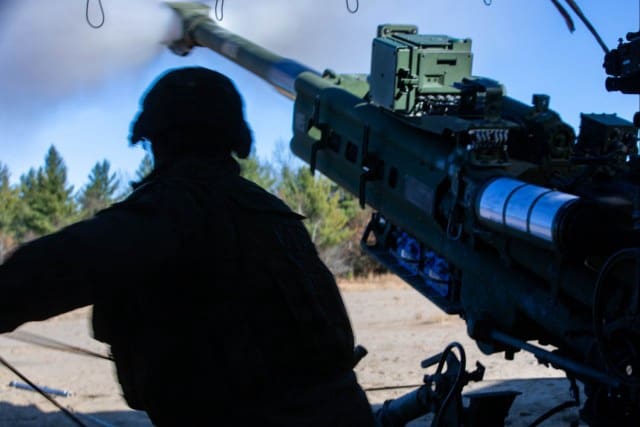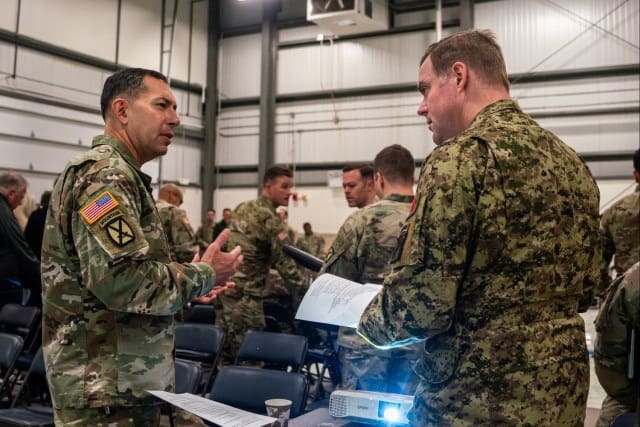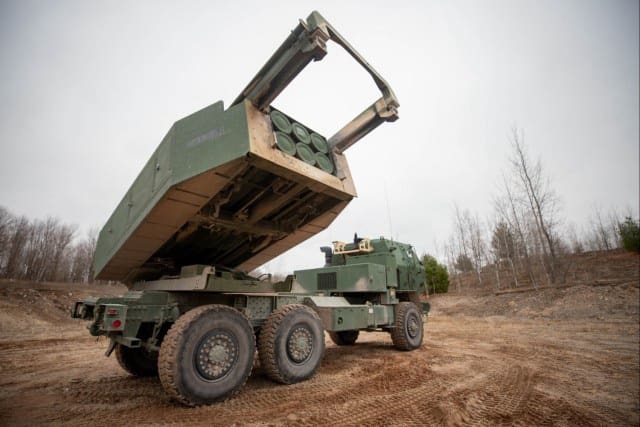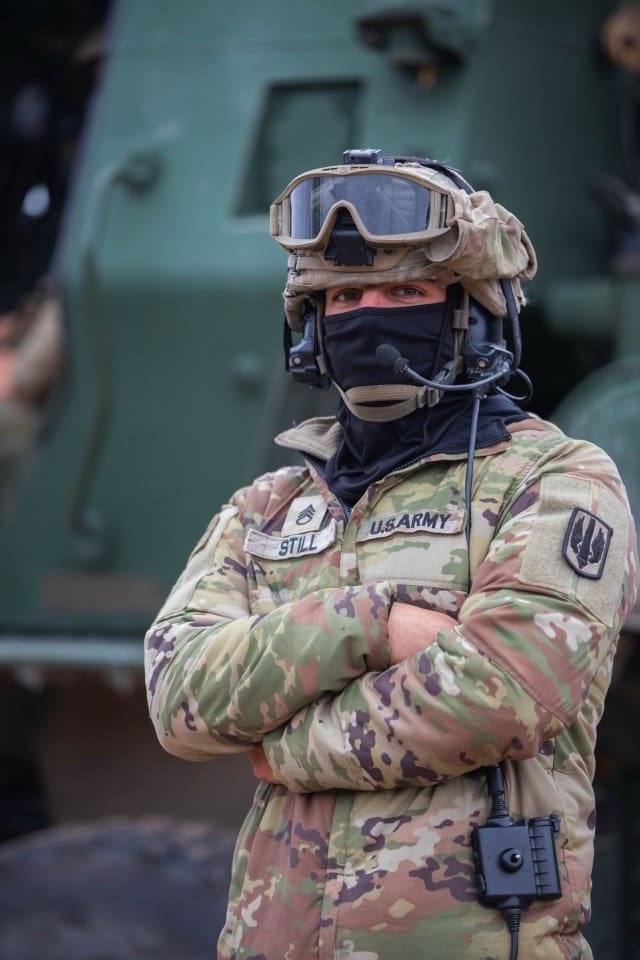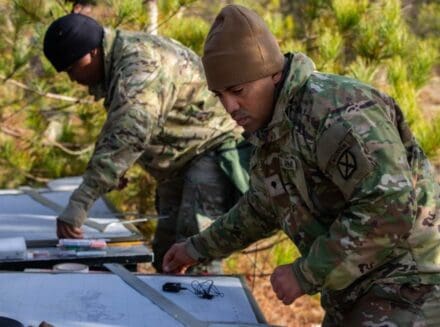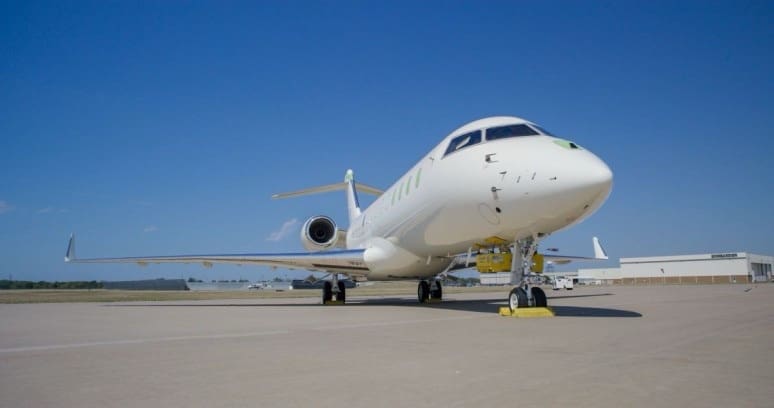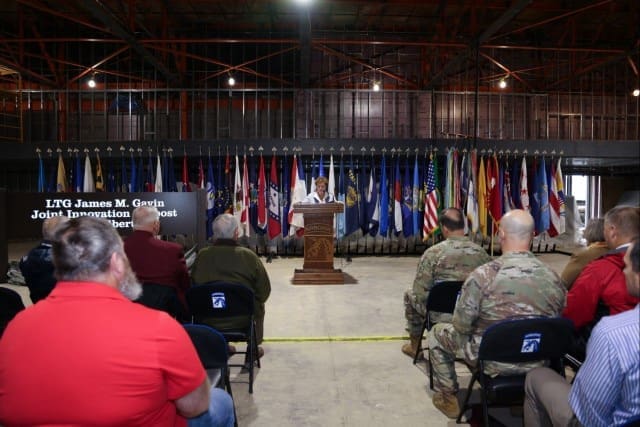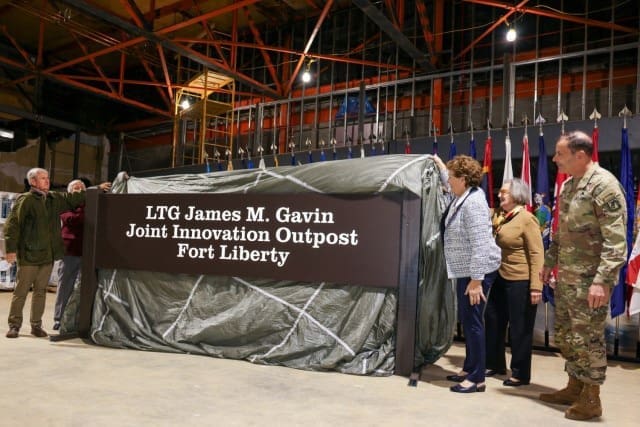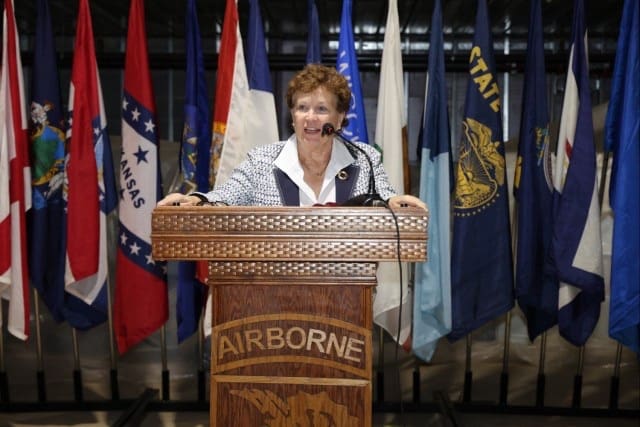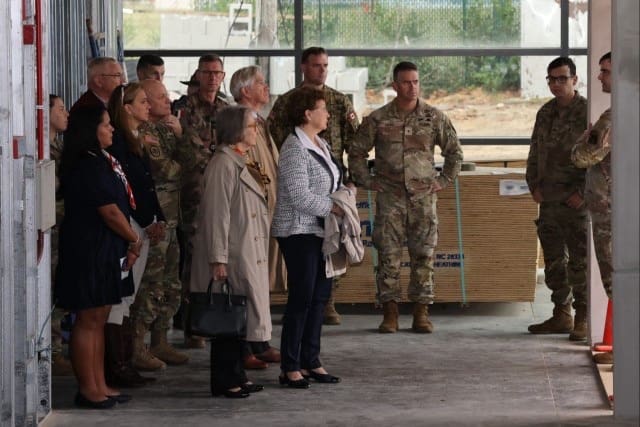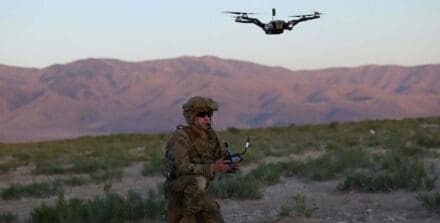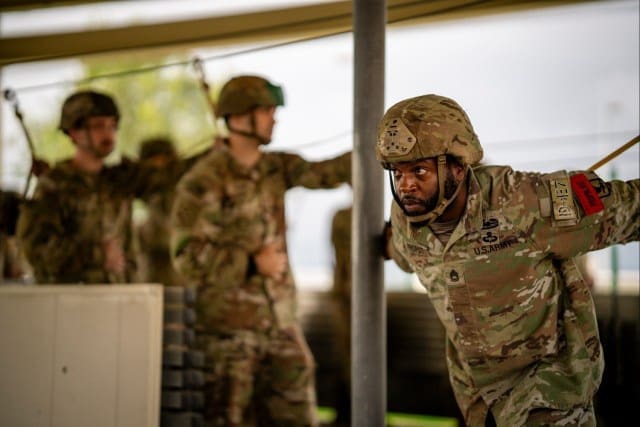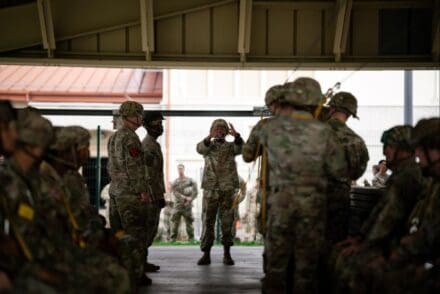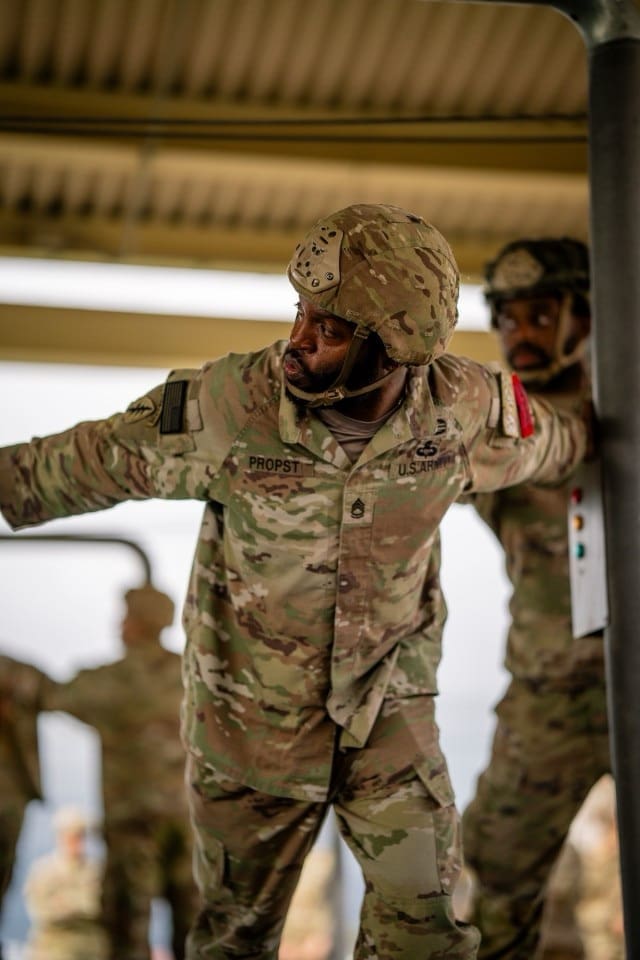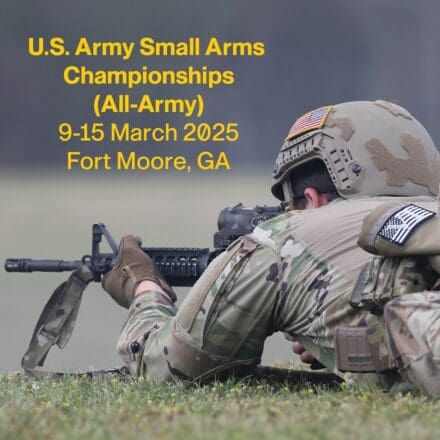
WASHINGTON — Huddled inside the International Space Station a million feet above the earth’s surface, Kate Rubins decided she wanted to go back.
In 2021, while on her second space mission, the astronaut chose to return to her roots in the medical science field and apply for a commission in the Army Reserve while continuing her career at NASA.
“I thought when I got back to the planet, this was one thing that I really wanted to do,” Rubins said.
She had worked alongside Army aviators and astronauts, including retired Army Col. Jeff Williams, who spent 28 years in NASA’s space program and served as commander of her first space flight in 2016. Retired Army Col. Pat Forrester, then the chief of the astronaut office at Johnson Space Center in Houston, Texas, mentored Rubins during her first years in the space program.
Before NASA, Rubins researched the effects and treatment of infectious diseases as a microbiologist with Army researchers from the U.S. Army Medical Research Institute of Infectious Diseases at Fort Detrick, Maryland, and the Centers for Disease Control in Atlanta, Georgia, to develop the first model of smallpox infection, research that would eventually jumpstart her career as a molecular microbiologist, studying and treating infectious illnesses in the U.S. and Africa.
That successful stint studying virology eventually led to her selection into NASA’s 20th astronaut class in July 2009. As an astronaut, Rubins would go on to log the fourth most hours in space by a female astronaut with two space flights under her belt. Rubins also became the first to sequence DNA in space during an expedition 2016.

For her achievements, the Army honored now-Major Rubins with the U.S. Army Basic Aviation Badge with the Astronaut Device and the Basic Space Badge, becoming the first Army reservist and fourth Soldier to receive the combined honor. The service presented the awards in a pinning ceremony at the Pentagon’s Hall of Heroes on November 21.
To qualify for the award, an astronaut must be a member of the U.S. Army and have flown on a space mission.
“This award is a really great opportunity to recognize both NASA and the U.S. Army, particularly the Army Reserve,” said Rubins a native of Napa, California. “People are excited about this award, but it’s not about me. This is really about the fact that it’s incredible that I get to serve my country in my civilian role as an astronaut and then in my Army Reservist role. So I think it’s pretty neat to see those two worlds come together.”
During Rubins’ years with NASA, she said she never forgot the call to duty that she felt working with Army astronauts and Army researchers. Rubins recalled seeing her own stepfather spend a decade as an Army chaplain.
Rubins reflected on her mentor, Forrester, an Army master aviator who completed Ranger School. He served as an advisor for astronauts during his 31 years in NASA.
“He’s an incredible mentor,” Rubins said. “I think every astronaut will say that Colonel Forrester left an indelible mark on the astronaut office.”
Williams, also an Army pilot and experienced astronaut, took the role of commander on NASA expedition 48, Rubins’ first space flight.
“He taught me everything I know about spacewalking,” she said. “It was incredible to serve with him. He was a very experienced astronaut at that point.”
Rubins went on her second NASA mission in 2020 to 2021 for Expeditions 63 and 64, joining a seven-person crew. On this six-month expedition at the International Space Station, Rubins once again felt the call to battle against a spreading disease. She had served as NASA’s deputy director for human health and performance after her first spaceflight and trained for her second spaceflight during the COVID-19 pandemic.
Rubins began filling out necessary paperwork for her direct commission aboard the ISS.
“It all came together like a lightbulb moment,” Rubins said. “I really wanted to serve my country when I get back. I can’t do it full time, but maybe I could sign up to be a reservist.”
Rubins wanted to use her skills in her previous career to help save lives as a Soldier. She said she realized that civilians with established careers can add value to the Army and Army Reserve.
“You’re bringing all those skills from the civilian world to bear… I think that’s great,” she said.
Rubins joined the Army Reserve as a medical service corps officer and microbiologist. In this role, Rubins explores using innovation and technology as a member of the Army Reserve’s 75th Innovation Command based in Houston, supporting Army Futures Command. Her work in continuous experimentation helps advance the Army’s modernization efforts, she said.
Rubins took a direct commission course at Fort Sill, Oklahoma, joining the Army Reserve as an 0-4. She then completed the Basic Officer Leadership Course at Fort Sam Houston, Texas, where she trained to be an medical service corps officer, attending courses alongside doctors, nurses, social workers and psychiatrists. She said she learned how to care for Soldiers in deployed environments and how to set up field hospitals
From the lab to the last frontier

Rubins first dreamed of flying into space while visiting a California state park as a 5-year-old. Her parents brought her to stargazing parties as a child where she said she remembers peering into telescopes and gazing at celestial bodies.
During Rubins’ years at Vintage High School in California’s Napa Valley, HIV cases and the AIDS epidemic plagued much of the nation. By 1994, AIDS became the leading cause of death among adults ages 25-44, according to the American Psychological Association. She worked on a program to combat HIV transmission as a high school student.
She said the opportunity to contribute to the fight against HIV inspired her to make that the focus of her undergraduate studies at the University of California-San Diego where she earned a bachelor’s degree in molecular biology.
During her time as a fellow and principal investigator position at the Whitehead Institute for Biomedical Research [MIT/Cambridge, Massachusetts]between 2007-2009, Rubins led a team of 14 researchers studying poxviruses, MPOX and smallpox, and filoviruses, Ebola and Marburg viruses Rubins and some members of her lab participated in missions to the Democratic Republic of the Congo in Central Africa. There Rubins worked with Army research teams to prevent and treat MPOX infection.
Following her work for MIT, she never lost sight of her dream. A friend encouraged her to apply to be an astronaut when she saw a job posting on USAjobs.gov. Rubins said she thought she faced slim odds. NASA typically recruits engineers, military test pilots and physicists.
To Rubins’ surprise, NASA called back.
“It didn’t seem like biology was very big part of NASA’s mission,” Rubins said. “What I didn’t know is, it actually is. It’s a big part, and it’s become a bigger part in recent years with the research on the International Space Station.”
Still Rubins had to pass multiple medical tests and make it through several rounds of interviews before getting accepted into the space program.
“When I got the final call, I think I was just more surprised than anything,” she said. “I never had expected that. Of course, I was incredibly thrilled and excited, but it was a pretty big life change.”
Rubins had to undergo rigorous training that included field survival skills and learning to fly the T-6 Texan with the Navy. She also had to spend hours in a simulator at the Johnson Space Center. She underwent training submerged in water to simulate weightlessness in zero gravity conditions.
Rubins said she faced the most daunting portion of the astronauts’ two-year training while learning to spacewalk. Rubins said being able to navigate weightlessness amid the vastness of space humbles even the most experienced military pilots. Forrester assigned her to evaluate and monitor spacewalks for crewmembers following her first spacewalk.
“Spacewalking is just one of these things that’s on the limits of human existence,” Rubins said. “It’s like the limit of what humans can do. So we’re absolutely pushing our performance to the max, and nobody finds it easy.”
On July 7, 2016, from the Baikonur Cosmodrome in southern Kazakhstan, Rubins would achieve something she once thought unreachable.
Rubins, as part of a three-person crew, launched into space. As the spacecraft torpedoed farther and farther from the Earth’s surface, Rubins focused on performing system checks, measuring oxygen levels and assessing the atmosphere.
Then her expedition commander told Rubins and another first-time astronaut to look out the window.??She said she gasped in awe at the vastness of the expanse and seeing the earth in orbit for the first time.
“I was speechless. I couldn’t talk for a full two minutes,” Rubins said. “It was so amazing to see the Earth and be orbiting the Earth. And my initial impressions were just that it was so bright and blue. It really looks like it’s glowing from space.”
“So you kind of just see this… blue ball suspended in the blackness of space. It was …. just a truly incredible sight,” she said.
On Rubins’ first two spacewalks she helped install a docking adapter to allow new vehicles to dock to the ISS. Rubins and Williams used a robotic arm to install the ring-shaped device. On the second spacewalk Rubins collapsed a radiator no longer used by the ISS and installed new high-definition cameras.
On her second spaceflight, Rubins led on a seven-hour spacewalk on Feb. 28, 2021, with fellow astronaut Navy Capt. Victor Glover and embarked on a six-hour, 56-minute walk with Japanese astronaut Soichi Noguchi.
Rubins actively supports NASA’s future goals to return to the moon through the agency’s Artemis campaign. The goal of Artemis: to return to the moon to explore the unexplored polar regions on the lunar surface for technology discovery, scientific advancement, and prepare for deep space and Mars missions, with the expedition scheduled for September 2026, according to NASA.
Soldier in Space
Rubins said many of the skills she learned in the Army are transferrable to her work as an astronaut. She said skills she learned as a Soldier, including land navigation during Basic Officer Leadership Course, will be useful during missions to the moon to chart paths on the lunar surface.
“We don’t have satellite navigation around the moon,” Rubins said. “We don’t have magnetic fields or a compass, so we are going to be using maps and terrain association and land navigation. Some of the other similarities are that these are professional people in both areas, and they’re doing a challenging and a difficult task, but they’re relying on a team.”
“And so I find the work that I do with the U.S. Army Reserve, working in small teams, depending on each other, working together, those skills are very helpful in the job of being an astronaut,” she said.
By Joe Lacdan, Army News Service
